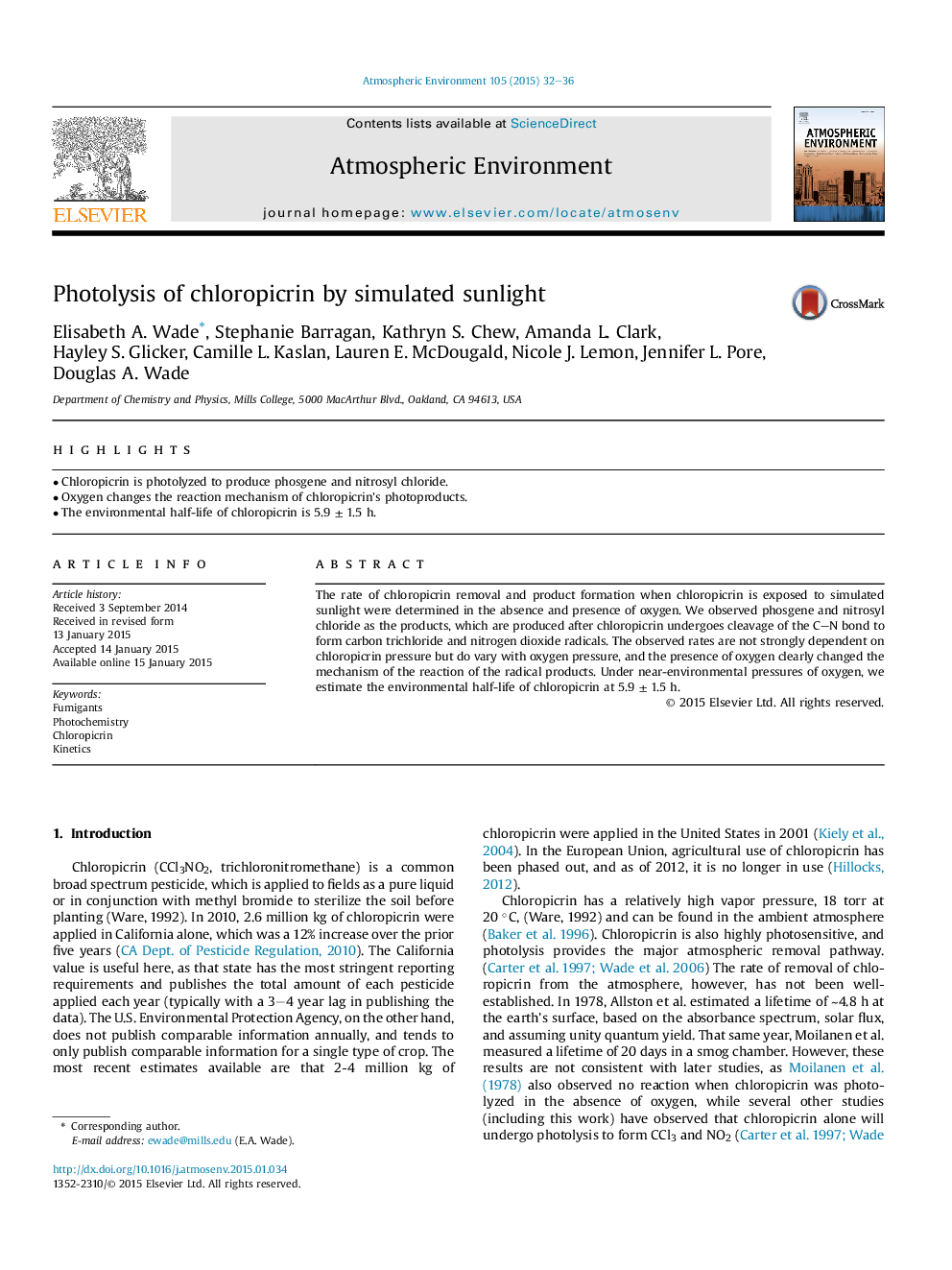| Article ID | Journal | Published Year | Pages | File Type |
|---|---|---|---|---|
| 6338657 | Atmospheric Environment | 2015 | 5 Pages |
Abstract
The rate of chloropicrin removal and product formation when chloropicrin is exposed to simulated sunlight were determined in the absence and presence of oxygen. We observed phosgene and nitrosyl chloride as the products, which are produced after chloropicrin undergoes cleavage of the C-N bond to form carbon trichloride and nitrogen dioxide radicals. The observed rates are not strongly dependent on chloropicrin pressure but do vary with oxygen pressure, and the presence of oxygen clearly changed the mechanism of the reaction of the radical products. Under near-environmental pressures of oxygen, we estimate the environmental half-life of chloropicrin at 5.9 ± 1.5 h.
Related Topics
Physical Sciences and Engineering
Earth and Planetary Sciences
Atmospheric Science
Authors
Elisabeth A. Wade, Stephanie Barragan, Kathryn S. Chew, Amanda L. Clark, Hayley S. Glicker, Camille L. Kaslan, Lauren E. McDougald, Nicole J. Lemon, Jennifer L. Pore, Douglas A. Wade,
